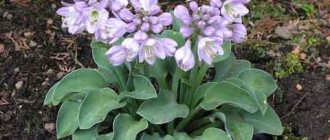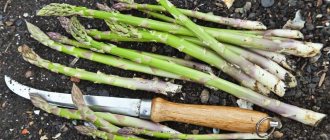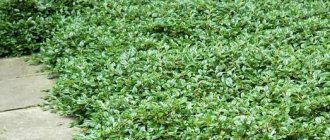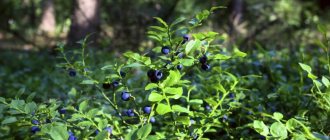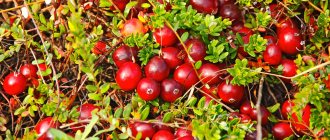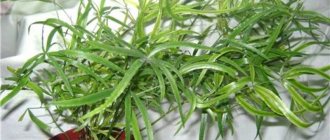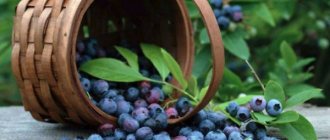Benefit
The benefits of sunberry are quite great. In its homeland, South America, the berry has become known for its high content of vitamin C. This well-known substance helps strengthen the immune system, improves collagen production, and strengthens the circulatory system. It is necessary to stabilize the functioning of the neural networks that form the human nervous system.
The berry contains A-carotene. This substance is used by the body to eliminate toxins. It is an antioxidant that helps fight cancer. Surprisingly, the fruits contain quite rare elements that are extremely difficult to find in other berries. These include, for example, silver. This element helps fight pathogenic bacteria. The berry contains chromium, which promotes glucose metabolism. No less surprising is the fact that sunberry contains selenium, which can slow down aging.
Application
First of all, the berry is used in medicine.
- It contains steroids that are needed by athletes recovering strength after hard training.
- The juice of the leaves is used to treat chronic runny nose.
- It is also used to prevent ARVI and tonsillitis.
- Substances contained in fruits normalize liver function. Therefore, you can eat sunberry together with meat so that it is better absorbed.
- Thanks to pectin, which adsorbs harmful compounds, it is possible to reduce the negative impact on the body from food poisoning.
- The berry helps treat constipation, gastritis, and gastrointestinal spasms.
- The elements in the composition promote hematopoiesis and normalize blood pressure. They also help improve skin elasticity.
- Sunberry improves vision.
- The extract can be used to heal burns, wounds and abrasions.
Beneficial features
The abundance of active components in Canadian blueberries has a beneficial effect on the body: it heals, strengthens, tones, improves metabolic processes, and delays old age. Healthy sunberry berries are recommended:
- as a means to strengthen the immune system;
- for colds;
- with high blood pressure;
- in case of rheumatism or joint problems;
- as a “panacea” for certain diseases of the liver and gastrointestinal tract (colitis, gastritis);
- for diabetes mellitus to restore blood sugar levels;
- if dermatological problems are observed (ulcers, wounds, burns, acne).
- Canadian blueberries help:
- for hemorrhoids and constipation;
- for kidney problems;
- in case of sleep disturbance;
- from edema of various nature;
- from inflammatory processes.
Contraindications
First of all, it is important to remember that sunberries contain many allergens. They can cause rashes and rashes on the skin. Doctors do not recommend consuming fresh berries in excessive quantities, or even better, making jam from them. Pectin, which has a beneficial effect on intestinal motility, acts as a laxative in large quantities. Other side effects include drowsiness, so eating such berries in the morning is not recommended. Berries are contraindicated for pregnant women.
Growing
Even though sunberry is an exotic berry, many farmers in Russia and Ukraine have already learned the basics of its cultivation. Note that it was Luther Burbank who first decided to cultivate the plant. He resorted to hybridization by crossing European and African nightshades. The result was fruits that did not have a pleasant taste. However, they quickly gained popularity as a medical remedy. In addition, sunberries were used to make many confectionery products, including jams. This exotic native of South America is also used as a base for making wines. The plant is unpretentious in care and is distinguished by rich harvests, which explains its wide popularity far beyond its distribution area. Planting a sunberry requires compliance with a number of conditions. As we indicated above, the plant’s closest relative is nightshade. Accordingly, it is better to start planting in February so that the seedlings can form. When the plant gets stronger, it can be “relocated”. This usually occurs at the beginning of summer with the establishment of predominantly warm weather. It is necessary to choose a lighted place as a planting area. The berry will require a lot of heat, and the soil for growth should not be too acidic. Zucchini or cucumbers can be used as predecessors. Undesirable ones include peppers and cabbage, as well as tomatoes. It is important not to forget about regular loosening. It is carried out at the end of autumn, adding humus or peat to the soil. Then the procedure is repeated when spring arrives. It is necessary to loosen the soil using a fork.
Seed treatment
Sunberry seeds need careful processing, as they often do not sprout. First, they resort to disinfection using a highly diluted solution of potassium permanganate. The seeds are dipped directly into it and kept for no more than 30 minutes, but not less than 20. Then the material must be washed and dried. To improve germination, place the seeds in a pan or pot filled with coarse sand. Preferably river. Shake the container thoroughly for 3-5 minutes. As a result of the abrasive action of sand particles, scratches are formed on the seeds, which will allow beneficial substances to easily penetrate their structure. As a result, you will get the first sprouts much faster. Finally, the seeds need to be soaked. To do this, they are folded into pre-rolled wet gauze and carefully wrapped. Water and growth stimulants are used as a solution. This “compress” must be kept for at least 2 days.
Growing procedure
First, prepare a mixture, which can be purchased at a gardening store. It needs to be poured into a container and filled with water at room temperature. The prepared seeds are planted about half a centimeter into the ground. Now the crops need to be covered with plastic wrap and left in a warm place, for example, on a windowsill. As soon as the first sprouts appear, the film must be removed and the sprouts allowed to develop freely. It is important that the soil does not dry out, so you need to ensure regular watering using warm water, which must be purified. When 3-4 leaves appear, you can start culling. Get rid of those sprouts that obviously cannot grow further. Gradually, as the time of transplantation approaches, the seedlings should begin to be taken out into the open air. We should also not forget about the need to periodically turn the glasses with seedlings to ensure straight growth of the stem. Before replanting, you must make sure that the soil has warmed up to 12°C. Don't forget about night frosts. Planting is done in pre-prepared holes with moist soil. Maintain intervals between seedlings of at least 70 centimeters. There should be 80 centimeters between rows. The stems must be covered with soil, then mulched with humus.
Planting sunberries in open ground
During the seedling period, sunberry forms bushes 30-35 cm high, having 5-7 true leaves. The heat-loving guest is planted in open ground after warm weather has established, when the threat of return frosts has passed.
Sunberry is suitable for an area that is well lit by the sun throughout the day. The landing site should be protected from cold winds. The soil is first dug up with humus, and before planting it is loosened with a rake. According to the rules of crop rotation, sunberries cannot be planted where tomatoes, peppers, potatoes and other representatives of the Solanaceae family grew. A good predecessor would be melons, green manure, and peas.
If the site has acidic soil, first apply liming or add dolomite flour and chalk.
Sunberry planting is carried out as follows:
- prepare holes in the area of such depth as to accommodate the root system of the seedling;
- maintain a step between bushes of 80-100 cm, between rows of at least 80 cm;
- Water the sunberry seedlings generously, after 2 hours remove them from the pots, being careful not to damage the roots;
- Plant the plants in moistened holes, add soil, compact around the stem.
To avoid rapid evaporation of moisture, mulch the plantings with peat chips.
Care
Care activities can be performed at one time.
- Watering is carried out regularly, while monitoring the condition of the soil. Excessively wet can cause rotting of the root system;
- Be sure to loosen the ground. As soon as the berries begin to fill, you should increase the volume of water;
- All-purpose fertilizers can be used as fertilizing;
- the plant does not need a garter, but it is possible to install spears that will protect the branches from excessive weight of the fruit;
- at the end of the growing season, shoots that are stepchildren are removed.
Note that sunberry blooms from summer to late autumn and produces fruit in clusters, each of which can contain 25 pieces.
Storage
To store sunberries, you should boil water and pour boiling water over the fruits, which will have a positive effect, eliminating the nightshade taste. A popular option for storing berries is making jam. It is prepared in the standard way by placing the berries in a large container and filling with cool water. After boiling and obtaining the finished mixture, the mass is decanted, after which it is boiled again in a basin. All that remains is to pour the jam into sterilized jars. Gourmets recommend adding citric acid or mint to it, which will significantly improve the taste. You can mix this jam with currants, gooseberries and rowan berries. Of course, we should note another way to store berries, which is to freeze the fruit. All we need to do is place the washed sunberries on a flat board and keep them in the cold for a day. Then you can distribute them into separate containers or bags. It is important to avoid contact, otherwise the berries will freeze to each other. The main disadvantage of this method is the violation of the presentation. During the defrosting process, fruits quickly lose their beneficial properties, so drying is considered more preferable. Leaves are also allowed for storage, which can be dried to later make decoctions. The collection is carried out in the summer, and for drying they are laid out in a layer no more than 5 centimeters thick on paper towels.
Pests
The sunny berry can withstand a variety of adversities quite steadfastly. She is not afraid of spider mites or Colorado potato beetles. Still, in some cases, damage may occur, but experienced gardeners recommend avoiding the use of insecticides that have a detrimental effect on the condition of the plant. It is better to use folk remedies, for which you can choose a tincture of onion, celandine or even a soap solution. Another dangerous pest for sunberries is late blight. A good method of combating it is Bordeaux mixture, used in relation to the nightshade family.
Options for using and eating berries
Based on the specific disease and for the purpose of prevention, various combinations with medicinal herbs, berries, and nuts are created on the basis of solar berries. And healthy sweets are used as a delicious dessert for the overall health of the body.
For prevention and treatment
Folk recipes have been created based on black samberi fruits, which are used for fairly common diseases. The most relevant and useful of them:
- Victory over weakness after illness. For 3 cups of Canadian blueberries, take a cup of pine nuts and twist the mixture. Add 3 tbsp to the contents. l. honey, mix thoroughly and store in the refrigerator. 1 tbsp. l. before meals is a useful elixir for restoring strength.
- First aid for a sore throat. Squeeze juice from samberi berries and gargle 2-3 times a day.
- Reduced pressure. They use juice from the stems of sunberries, to which honey is added. Ratio: ½ l. juice plus 2 tbsp. l. honey Drink 1 tbsp. l. mixtures in the morning and afternoon.
- Supports the functioning of the cardiovascular system. It is enough to eat a small handful of berries a day to cleanse the blood and increase the elasticity of blood vessels.
- Improved visual acuity. Thanks to the presence of carotene (provitamin A), an extract from the beneficial samberi fruit helps maintain the quality of vision.
- Solving dermatological problems. A healthy gruel made from ground berries and leaves of Canadian blueberries, to which a little sour milk or kefir is added, helps with pustules, abscesses, and acne. The mixture is used immediately while it is saturated with useful active substances.
- A lifesaver for skin diseases. For psoriasis, eczema, seborrhea, prepare a useful composition from 2 egg whites, 100 g of juice from garden nightshade leaves and 2 tbsp. l. berry juice Lotions are applied to problem areas.
- Rescue from gastritis. Mix leaves, stems and sunberry berries and pour 100g of the mixture into 3 liters. boiling water The infusion is prepared for 3 hours, then filtered. Take 3 tbsp. l. half an hour before meals.
- Fighting insomnia. Juice is squeezed out of samberi leaves, to which linden honey is added. 1 tbsp is enough. l. a useful “elixir” the night before bedtime to sleep like a baby.
- Treatment of headaches. Mix the crushed stems and berries (1:1), add hot water and bring to a boil. The infusion of Canadian blueberries is prepared for 12 hours. Then a gauze bandage is impregnated with it and applied to the forehead in the form of lotions. The procedure takes 20 minutes. It must be repeated daily until the debilitating headaches go away.
Interesting Facts
The sunny berry boasts some quite remarkable features:
- It is used to treat rheumatism, skin diseases, asthma, gastritis, and neurosis. Thus, in many ways the plant and its fruits can be called a universal medicine.
- To restore immunity after a serious illness, it is enough to drink one mug of tincture from the leaves of the plant. It will also serve as an excellent preventive measure.
- The berry is one of the leaders in calorie content - 100 grams contain approximately 200 kilocalories.
- One plant produces at least 10 kilograms of fruit per year, which is a very impressive figure for nightshades.
- Ripe fruits are always blue-black and literally sparkle in the sun.
The sunberry is truly amazing, if only because it is not eaten in its pure form, but is widely used in medicine. Even if it does not become a table decoration, but thanks to simple cultivation, everyone can afford sunberry jam.
And from this video you can learn more about planting sunberries.
What kind of berry is Samberry?
The creation of a hybrid of Canadian blueberries is associated with the name of the American breeder Luther Burbank, who crossed the African nightshade with its European counterpart, the creeping nightshade. The hybrid inherited from its parents large fruits (the size of a cherry), unpretentiousness, good yield and healthy composition of berries.
Externally, the Canadian sunberry blueberry looks like a tomato bush, and the berries really resemble large blueberries. This annual plant is distinguished by characteristic features:
- height about 1.5 m;
- hexagonal stem;
- leaf like nightshade;
- inflorescence – a raceme on which up to 15 berries ripen;
- The fruits are black and shiny, large.
The flowering and fruiting period of Canadian blueberries continues throughout the season. When ripe, the bush is hung with shiny, healthy samberi berries. They do not ripen at the same time: harvesting takes place until late autumn. About a bucket of black fruits are collected from the bush.
Sunberry is also known by other names. It is called sunberry, garden nightshade, blueberry forte, and also Canadian blueberry. It is not common in the vast expanses of our country and is extremely rare in garden plots.
What do sunberries taste like?
The taste of the sunny sunberry leaves much to be desired. The hybrid, bred from plants from different continents, did not inherit excellent taste, so not everyone will risk tasting the berry fresh. Unripe berries are poisonous, since samberi is a representative of the family. Nightshades and unripe fruits contain the toxic alkaloid solanine.
The garden form of samberi is not far removed from its wild relatives, the fruits of which have a specific, sharp taste. To create a flavor spectrum, we combine the taste of sour currants with tart blueberries, add a sweetish aroma mixed with the smell of freshly cut grass. And the not-so-pleasant aftertaste from Canadian blueberries will complete the picture.
The situation is saved by homemade preparations (jams, jams, wine), which give the berries a different taste and aroma, and also retain most of the beneficial properties. Some people like the taste of ripe sunberries, but this is not an acquired taste.
